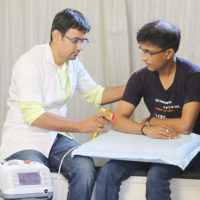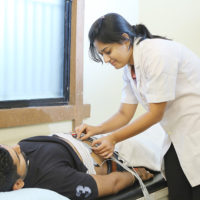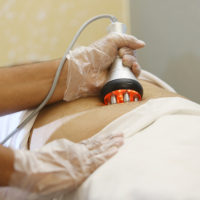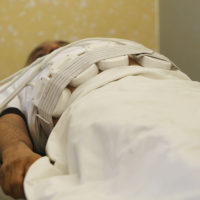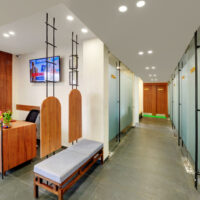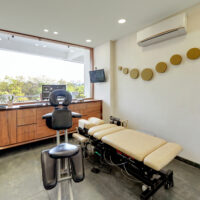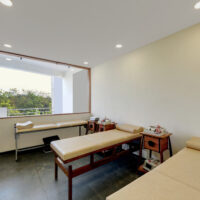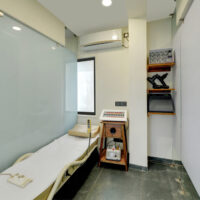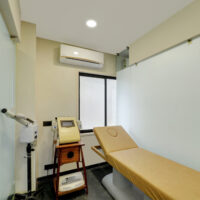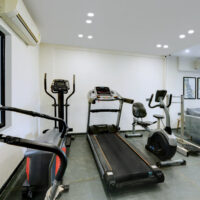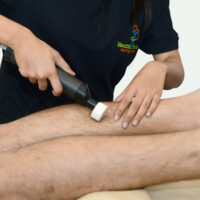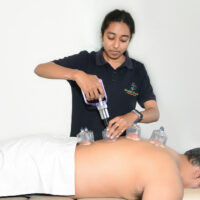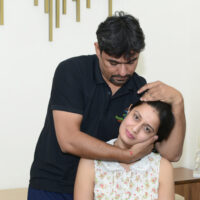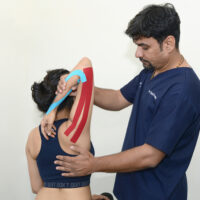Neck pain is most commonly caused by joint dysfunction or soft tissue injuries; however, certain conditions and poor postural habits can also cause neck pain.
Neck Pain
Whiplash is a type of neck injury that occurs when the head is suddenly and forcefully jerked back and forth. It most commonly occurs in car accidents, but can also be caused by sports injuries or falls. The sudden movement of the head can cause damage to the soft tissues in the neck, including muscles, ligaments, and tendons.
Symptoms of whiplash can include neck pain and stiffness, headaches, dizziness, fatigue, and difficulty moving the head. Some people may also experience numbness or tingling in the arms or hands.
- Properly adjust your vehicle’s headrest, Ensure that your vehicle’s headrest is positioned correctly. The top of the headrest should be at least as high as the top of your head, and the distance between the back of your head and the headrest should be minimal (ideally less than 2 inches). This helps to support your head and neck during a rear-end collision.
- Use seat belts correctly, always wear your seat belt while driving or riding in a vehicle. Seat belts can help to keep you properly positioned in your seat during an accident, reducing the likelihood of severe whiplash injuries.
- Keep a safe distance from the vehicle in front of you, especially during heavy traffic or in poor weather conditions. This provides you with more time to react and reduces the chances of a rear-end collision.
- Stay alert and aware of your surroundings while driving. Be prepared for sudden stops or changes in traffic flow, and avoid aggressive driving behaviors, such as tailgating or excessive speeding.
- Adjust your driving posture: Maintain a proper driving posture to minimize the risk of injury.
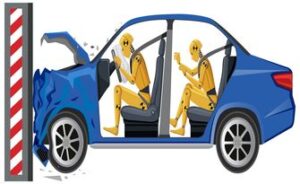
Strains and Sprains
A sprain or strain in the neck occurs when the muscles, tendons, or ligaments in the neck are stretched or torn due to sudden force, such as a car accident, fall, or sports injury
A neck strain refers to an injury to the muscles or tendons in the neck, while a neck sprain involves damage to the ligaments that connect the bones in the neck. Symptoms of a neck sprain or strain may include pain, stiffness, and limited range of motion in the neck. You may also experience headaches, dizziness, or tingling in the arms or hands.
- Practice proper posture, whether you’re sitting, standing, or walking. Keep your head aligned with your spine, and avoid slouching or hunching forward.
- If you have a job or activity that requires you to sit or engage in repetitive tasks for extended periods, take frequent breaks to stretch and change your position.
- Ensure that your workspace is ergonomically designed to reduce strain on your neck and shoulders.
- Adjust your chair, desk, computer screen, and keyboard to appropriate heights and angles to promote a neutral posture.
- Regular exercise that focuses on strengthening the neck and shoulder muscles can help improve their endurance and reduce the risk of strain.
- Avoid sudden movements: Be mindful of sudden and jerky movements that can strain the neck muscles
- Choose a supportive pillow that suits your sleeping position and provides adequate neck support. This helps maintain the natural alignment of your neck while you sleep, reducing the strain on your muscles.
- Stay active and maintain a healthy weight.
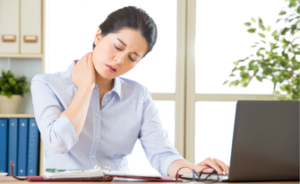
Herniated Disc
A herniated disc in the neck occurs when one of the cushioning discs between the vertebrae in the neck becomes damaged and bulges out of place, causing pressure on the nerves and pain. This can be caused by wear and tear over time or by sudden trauma, such as a car accident or fall.
Symptoms of a herniated disc in the neck can include pain, numbness, or weakness in the neck, shoulders, arms, or hands. Some people may also experience tingling or a “pins and needles” sensation. In severe cases, a herniated disc can cause difficulty with coordination, balance, or bladder or bowel function.
- Practice proper posture while sitting, standing, and lifting heavy objects. Avoid slouching or hunching forward, as this can put extra pressure on the discs in your spine
- When lifting heavy objects, use your legs instead of your back to do the lifting. Bend your knees, keep your back straight, and hold the object close to your body. Avoid twisting your spine while lifting.
- Engage in regular physical activity to keep your back muscles strong and flexible.
- Excess weight puts additional stress on your spine, increasing the risk of disc herniation. Maintain a healthy weight through a balanced diet and regular exercise to reduce the strain on your spinal discs.
- Practice proper ergonomics: Whether at work or home, ensure that your workspace is ergonomically designed.
- If you frequently need to lift heavy objects, consider using lifting aids or equipment, such as dollies, carts, or lifting belts, to reduce the strain on your back.
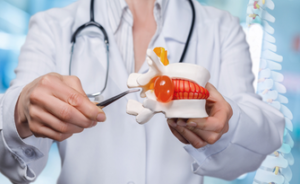
Forward Head Posture
Forward head posture is a common postural problem that occurs when the head is positioned in front of the shoulders. This can be caused by a variety of factors, including spending too much time sitting at a desk or computer, holding the head in a forward position while reading or texting, or carrying heavy bags or backpacks on one shoulder.
Forward head posture can lead to a variety of health problems, including neck pain, headaches, shoulder pain, and upper back pain. It can also contribute to poor breathing patterns and decreased lung capacity.
- Keep your head aligned with your spine, and avoid slouching or jutting your head forward. Imagine a string pulling your head gently upward to help align your posture.
- Ensure that your workstation is set up in an ergonomic manner. Adjust your chair, desk, computer screen, and keyboard to appropriate heights and angles. Your computer screen should be at eye level, and your keyboard should be positioned so that your elbows are at a 90-degree angle.
- If you have a sedentary job or spend extended periods in one position, such as sitting at a desk, take regular breaks to stretch and change your posture. Stand up, walk around, and perform simple stretching exercises for your neck, shoulders, and back.
- Strengthen neck and upper back muscles.
- Practice neck and shoulder stretches.
- Use supportive pillows and mattresses.
- Avoid prolonged phone or tablet use.

Pinched Nerve
A pinched nerve occurs when a nerve in the body is compressed or squeezed by surrounding tissues, such as bones, muscles, or cartilage. This can cause pain, numbness, tingling, or weakness in the affected area. Pinched nerves can occur anywhere in the body, but they are most common in the neck, back, and wrists.
In the neck, a pinched nerve can be caused by a herniated disc, bone spurs, or muscle strain. Symptoms of a pinched nerve in the neck can include neck pain, radiating pain down the arm, numbness or tingling in the arm or hand, and weakness in the affected arm or hand.
- Practice proper posture while sitting, standing, and lifting heavy objects. Avoid slouching or hunching forward, as this can put extra pressure on the discs in your spine
- When lifting heavy objects, use your legs instead of your back to do the lifting. Bend your knees, keep your back straight, and hold the object close to your body. Avoid twisting your spine while lifting.
- Engage in regular physical activity to keep your back muscles strong and flexible.
- Excess weight puts additional stress on your spine, increasing the risk of disc herniation. Maintain a healthy weight through a balanced diet and regular exercise to reduce the strain on your spinal discs.
- Practice proper ergonomics: Whether at work or home, ensure that your workspace is ergonomically designed.
- If you frequently need to lift heavy objects, consider using lifting aids or equipment, such as dollies, carts, or lifting belts, to reduce the strain on your back.

Spinal Stenosis
Spinal stenosis is a condition in which the spinal canal narrows and puts pressure on the spinal cord and nerves. This can be caused by a variety of factors, including age-related changes in the spine, herniated discs, bone spurs, or other conditions that can cause inflammation or swelling in the spine.
Symptoms of spinal stenosis can include neck pain, arm pain, weakness, and numbness or tingling in the arms, hands and fingers. Some people may also experience difficulty with balance or coordination.
- Excess weight puts additional stress on the spine, contributing to the degeneration of the cervical discs. Maintain a healthy weight through a balanced diet and regular exercise to reduce the load on your spine.
- Engage in regular exercise that focuses on strengthening the muscles that support the spine, particularly the core muscles. Strengthening the muscles can help provide better support to the lumbar spine and reduce the risk of spondylosis.
- Maintain proper posture when sitting, standing, and walking. Use ergonomic chairs and ensure that your workstation is set up correctly to promote good posture and reduce strain on the spine
- Ensure that your workspace, including your desk, chair, and computer setup, is ergonomically designed. Adjust the height and position of your chair, desk, and computer screen to promote good posture and reduce strain on your spine.
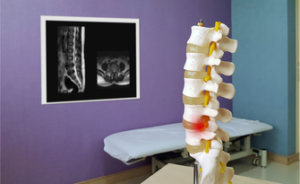
Cervical Spondylosis
Cervical spondylosis, also known as degenerative disc disease, is a condition that occurs when the cushioning discs in the neck begin to break down and deteriorate over time. This can cause the vertebrae to rub against each other, leading to the formation of bone spurs and narrowing of the spinal canal.
Symptoms of cervical spondylosis can include neck pain, stiffness, and decreased range of motion in the neck. Some people may also experience numbness, tingling, or weakness in the arms, hands, or fingers.
- Engage in regular exercise that focuses on strengthening the muscles that support the spine, particularly the core muscles. Strengthening the muscles can help provide better support to the lumbar spine and reduce the risk of spondylosis.
- Maintain proper posture when sitting, standing, and walking. Use ergonomic chairs and ensure that your workstation is set up correctly to promote good posture and reduce strain on the spine
- Prolonged or repetitive activities that involve bending, lifting, or twisting motions can contribute to the development or progression of Cervical spondylosis
- Ensure that your workspace, including your desk, chair, and computer setup, is ergonomically designed. Adjust the height and position of your chair, desk, and computer screen to promote good posture and reduce strain on your spine.

YOUR NEXT STEPS!
-
Request An Appointment
-
Find the Root Cause and Receive A Custom Treatment Plan
-
Monitor Progress
-
Recover & Get Back to Life!
